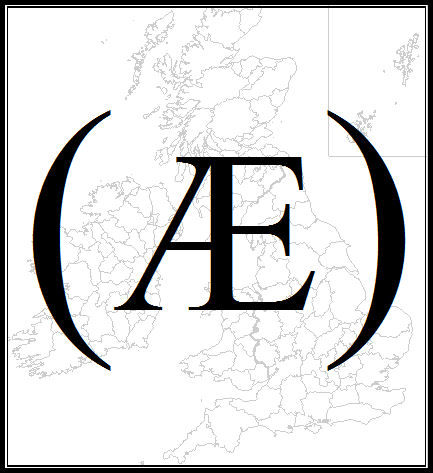
An Atlas of Alexander J. Ellis's
The
Existing Phonology of English Dialects
Ellis's Methods
Maps
References
Home
The principal target of Ellis's investigation was the phonology of the traditional non-standard dialects of Britain and Ireland spoken in areas where English/Scots was the long-standing native language - essentially England and Lowland Scotland. A few other areas where English had been introduced more recently were also included - Cornwall, a number of locations in south Wales and on the Welsh side of the Welsh/English border, the Isle of Man, and the baronies of Forth and Bargy in County Wexford in Ireland (for other data from Ireland included in this online atlas, see here).
Ellis, like other traditional dialectologists, was interested in the historical phonology of these dialects - in essence how the sound patterns of Old and Middle English had developed in non-standard regional varieties - and was keen to identify the endogenous changes which had made them so distinct from Standard English. As Ellis puts it in the EPED (Ellis 1889: 1):
The object of this treatise is to determine with considerable accuracy the different forms now, or within the last hundred years, assumed by descendants of the same original word in passing through the mouths of uneducated people, speaking an inherited language, in all parts of Great Britain where English is the ordinary medium of communication between peasant and peasant.
As this statement makes clear, Ellis was interested in the speech of working-class, uneducated natives (especially older members of the community) - people he describes, with his upper middle-class Victorian perspective, as 'peasants'. He, like other traditional dialectologists after him, hypothesised that these were the people whose speech was least likely to have been influenced by other varieties of English (especially Standard English) and was most likely to provide evidence for endogenous phonological patterns.Even in the late 19th century, however, these 'peasants' had been exposed to more standard forms of English, resulting in a situation which Ellis (1889: 1) describes as follows:
the
peasantry throughout the country have
usually two different pron[unciations]., one which they use to one
another, and
this is that which is required; the other which they use to the
educated, and
this is their own conception of r[eceived]p[ronunciation]., though
often
remarkably different from it, is absolutely worthless for the present
purpose..
In other words, Ellis wanted to investigate speakers' localised forms of speech, not their whole linguistic repertoire, again an aim which was shared by later dialectologists in Britain and elsewhere in the first half of the 20th century. For the methods Ellis employed to do so, see [Elicitation].
As Ellis's interest was in historical phonology and the synchronic patterns which had developed in non-standard dialects, his primary focus was on the pronunciation of everyday English words (e.g. certain, do, name, old, put, stone) which were found in all varieties and which had been in the language for centuries. Most such words were inherited from Old English or were borrowed into English from Old Norse or Old French at an early date. Most of the data he gathered consists of phonetic transcriptions of lists of words or of short texts containing key words. Ellis selected the words in his survey to be representative of historical phonemic groups (e.g. the words down, now and out were included in his Dialect Test to determine the development of Middle English /uː/, which occurred in all of these words historically). But because of the nature of some of Ellis's elicitation tasks, other kinds of linguistic features were also surveyed - in particular a range of morpho-syntactic variables and a small number of lexical variables (see Elicitation and Presentation of data for further details).